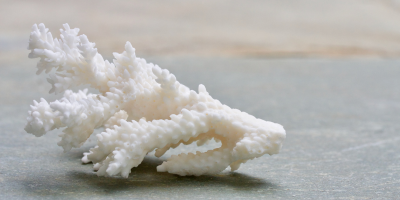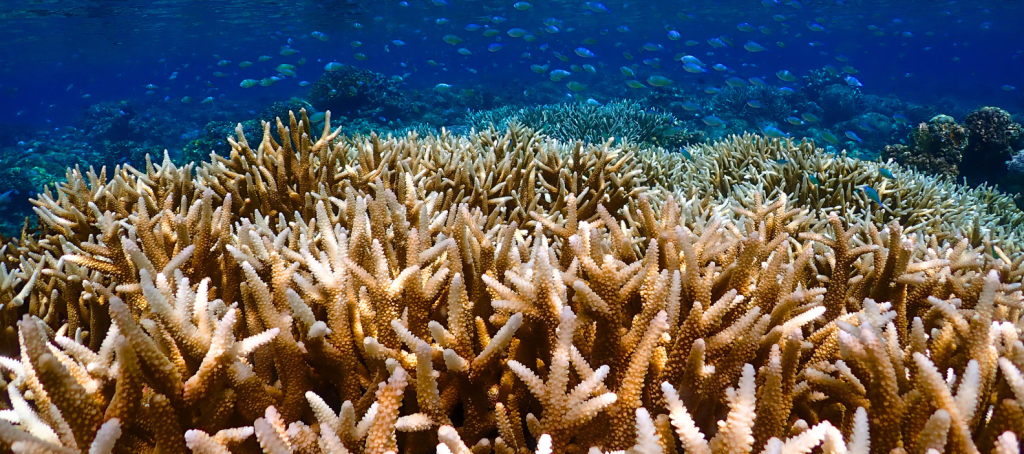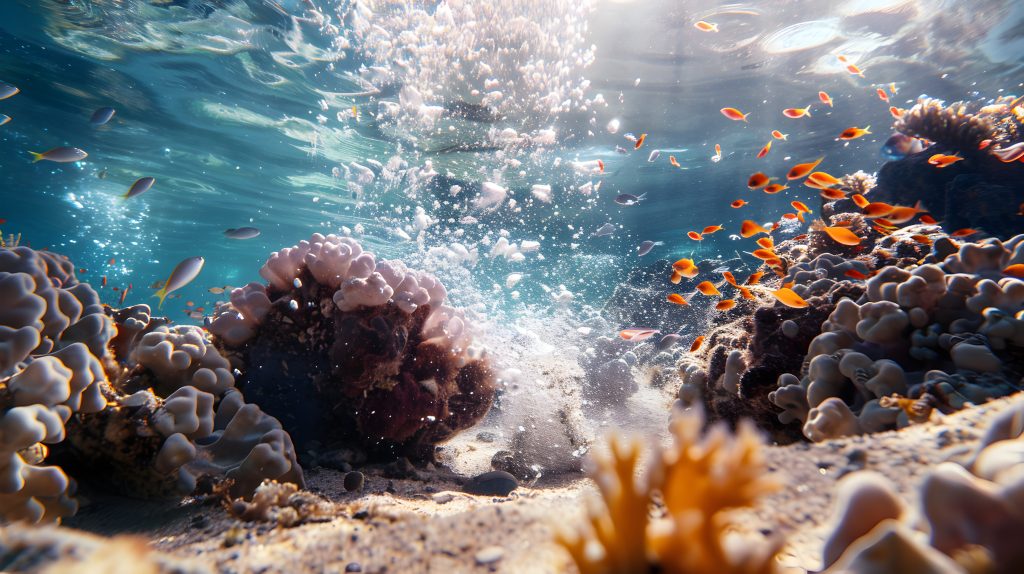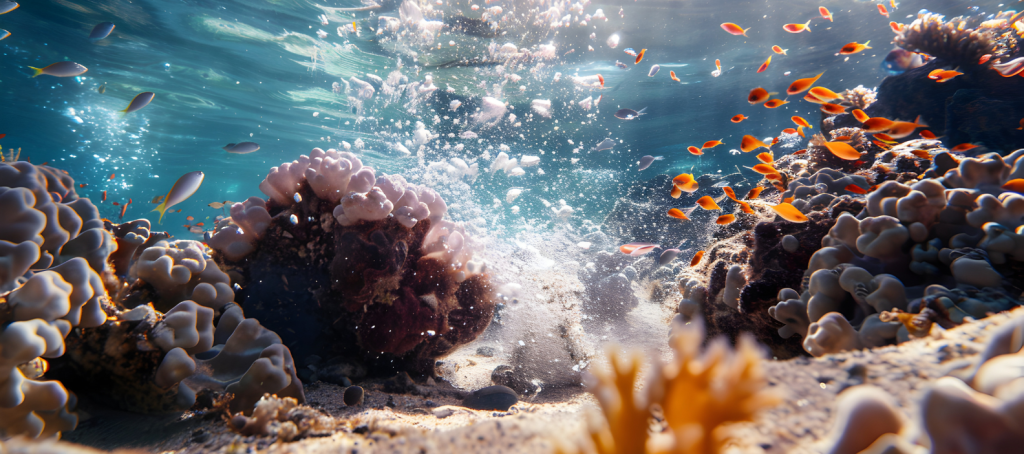Why are some sunscreens harmful to the environment?

When we swim, sunscreens disperse into the water, releasing substances that can disrupt marine organisms, particularly corals. These include chemical filters such as oxybenzone and octinoxate are suspected of accelerating coral bleaching and altering marine ecosystems.
The oceans: a fragile and essential balance to preserve
The oceans are much more than just a heavenly backdrop. They are the beating heart of our planet and play an active role in its proper functioning:
- A major climate regulator : The oceans absorb around 30 % of the CO₂ emitted by human activities and produce over 50 % of the oxygen we breathe thanks to phytoplankton.
- A biodiversity haven: More than 80 % of living species are marine, and some haven't even been discovered yet.
- Vital support for millions of people: Fishing, tourism and other economic sectors are directly dependent on healthy oceans.
Every threat to the oceans has a direct impact on our future, and preserving these ecosystems is a collective responsibility.
Why do some sunscreens threaten the oceans?
Some chemical filters, such as oxybenzone and octinoxatehave long been used in sun creams for their effectiveness against the sun's rays. UVA and UVB. They are particularly appreciated for their water resistance and ease of application.
However, studies have shown that these substances can :
- Altering coral development affecting their DNA, slowing their growth and weakening their natural defences.
- Contributing to coral bleachingeven at low concentrations, by disrupting their relationship with the symbiotic algae that provide them with energy and color.
- To have toxic effects on marine species such as fish and crustaceans, by modifying their development and reproduction.
Faced with these alarming facts, the Hawaii law has banned the sale of creams containing these substances from 2021, followed by other regions such as Palau and certain Mexican islands.
Many suncare brands, long dependent on these filters, have since rethought their formulas to comply with these new standards and meet the expectations of consumers looking for more environmentally-friendly care.

Corals: underwater treasures in peril
What is coral bleaching?
Corals are living organisms that harbor microscopic algae, called zooxanthellae, which provide them with energy and give them their brilliant color. But when environmental conditions become unfavorable, corals expel these algae, leaving them white and vulnerable.
📌 The main causes of coral bleaching :
- Global warming: A rise in water temperature of just 1 to 2°C can trigger mass bleaching.
- Toxic substances : Certain chemicals, including sunscreens, promote this expulsion and weaken corals.
- Ocean acidification: The absorption of CO₂ makes the water more acidic, preventing corals from regenerating.
Why are corals essential to the marine ecosystem?
Coral reefs cover less than 1 % of the oceans, but their importance is colossal:
- An irreplaceable habitat: They are home to over 25 % of marine biodiversity, providing refuge and breeding grounds for countless species.
- Natural protection for the coast : They attenuate the force of waves and reduce erosion, protecting coastlines from storms and hurricanes.
- A major economic pillar : Fishing and tourism generate billions of euros every year and are directly dependent on the health of the reefs.
Without healthy corals, the balance of the oceans is threatened, impacting biodiversity and millions of people living off marine resources.

Alternatives for a more respectful protection of the oceans
- Safer UV filters: More and more formulas are incorporating alternative filters, such as mineral filters (non-nanoparticulate zinc oxide and titanium dioxide) or new-generation synthetic UV filters, with no known impact on corals.
- Eco-designed packaging: Limiting our impact also means taking a global approach, by reducing the use of plastic and favoring recyclable and recycled materials.
- Broader commitments : As well as sun creams, preserving the oceans also involves daily actions.

✅ Reduce the use of plastics, especially single-use plastics.
✅ Adopt more responsible consumption, favoring environmentally-friendly products.
✅ Support conservation initiatives, such as coral replanting programs.
Try our sun milk without controversial filters - INVISIBLE SUN MILK SPF50+
Conclusion: a challenge that concerns us all
The oceans and coral reefs are a treasure to be protected, not only for marine biodiversity, but also for the balance of our planet and future generations. Every gesture counts: by choosing ocean-friendly products, reducing our impact and raising the awareness of those around us, we are contributing to a more sustainable future for our seas and coasts. Preserving the oceans means preserving life.



